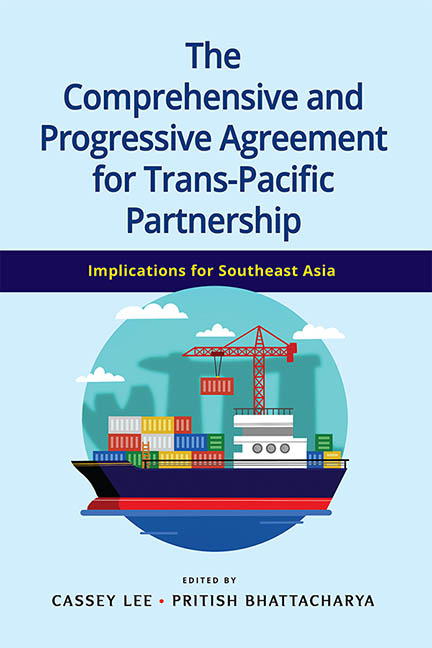Book contents
- Frontmatter
- Contents
- Preface
- Abbreviations
- About the Contributors
- 1 Introduction
- 2 The Economics of the CPTPP and RCEP: Asia Pacific Trade Agreements without the United States
- 3 The TPP and CPTPP: Truths about Power Politics
- 4 The Investment Chapter and ISDS in the CPTPP: Lessons from and for Southeast Asia
- 5 Intellectual Property in the CTPP and Access to Medicines A Thai Perspective
- 6 New Rules for State-Owned Enterprises in the CPTPP
- 7 Impact of the CPTPP on Japanese Manufacturing Affiliates in ASEAN
- 8 Reassessing Malaysia’s Export Opportunities in the TPP and CPTPP
- 9 Impact of the CPTPP on Vietnam
- 10 Should Thailand Join the CPTPP?
- 11 Indonesia, the TPP and CPTPP: Hold Your Breath
- Index
2 - The Economics of the CPTPP and RCEP: Asia Pacific Trade Agreements without the United States
Published online by Cambridge University Press: 08 October 2021
- Frontmatter
- Contents
- Preface
- Abbreviations
- About the Contributors
- 1 Introduction
- 2 The Economics of the CPTPP and RCEP: Asia Pacific Trade Agreements without the United States
- 3 The TPP and CPTPP: Truths about Power Politics
- 4 The Investment Chapter and ISDS in the CPTPP: Lessons from and for Southeast Asia
- 5 Intellectual Property in the CTPP and Access to Medicines A Thai Perspective
- 6 New Rules for State-Owned Enterprises in the CPTPP
- 7 Impact of the CPTPP on Japanese Manufacturing Affiliates in ASEAN
- 8 Reassessing Malaysia’s Export Opportunities in the TPP and CPTPP
- 9 Impact of the CPTPP on Vietnam
- 10 Should Thailand Join the CPTPP?
- 11 Indonesia, the TPP and CPTPP: Hold Your Breath
- Index
Summary
Introduction
The withdrawal of the United States from the Trans-Pacific Partnership (TPP) dramatically disrupted the long-standing trade agenda of the Asia Pacific. The region's governments have pursued trade and investment liberalization strategies for at least a quarter of a century, and many recently participated in both the Comprehensive and Progressive Agreement for Trans-Pacific Partnership (CPTPP) and Regional Comprehensive Economic Partnership (RCEP) negotiations. Since the withdrawal of the United States, not all of the remaining members have ratified the CPTPP. Should these countries still move forward with the agreement? Should they, instead, seek bilateral agreements that the United States still seems interested in concluding? Or should the region simply just focus on RCEP?
This chapter explores the choices facing Asia Pacific governments from the economic and political economy perspectives. The economic analysis presented here confirms that US withdrawal has been costly not only for the United States, but also for its Asia Pacific partners. But, in addition, it shows that significant gains are possible from less rigorous but wide-membership trade agreements such as the RCEP, and from high-quality trade agreements such as the CPTPP without the United States. As Schott (2017) noted, “bigger is better” with respect to Asia Pacific trade agreements, but this analysis also shows that “better is bigger” in the sense that higher-quality agreements generate larger benefits. As explained below, these results are supported by simulation studies similar to those conducted earlier for the TPP including the United States (Petri and Plummer 2016; Petri, Plummer, and Zhai 2012).
From a geopolitical perspective, new Asia Pacific agreements will increase the leverage of individual countries against bilateral pressures and help keep trade liberalization on the global agenda. In time, these agreements will likely attract other partners, too. For example, if an eleven-member CPTPP agreement later admitted the five Asia Pacific economies that have expressed interest in the alliance in the past (thus creating a TPP16), the total gains would rival those from the original agreement with the United States. Benefits could be further amplified if China, Europe, and/or the United States sought membership in the future. New agreements would also give members expanded influence over global rules.
- Type
- Chapter
- Information
- Publisher: ISEAS–Yusof Ishak InstitutePrint publication year: 2021

